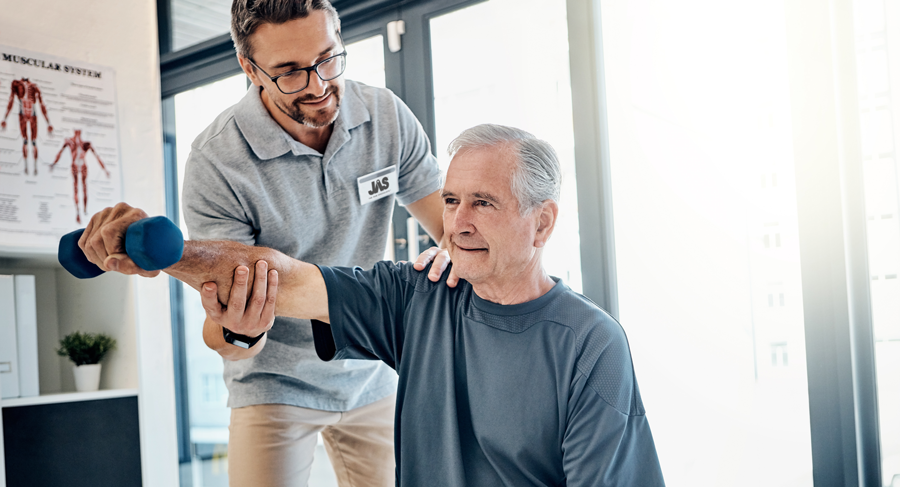
Since its inception in 1992, JAS has helped to successfully restore joint ROM for over 350,000 patients worldwide. With unequaled design technology, JAS moves beyond convention to assure the best results for patients challenged with range of motion loss. Lately, however, we have seen numerous comparisons in the industry to our pioneering and product lines.
Success breeds comparison. As the pioneers and innovators of static progressive stretch technology, JAS is absolutely unmatched in developing a comprehensive portfolio of ROM recovery solutions. Explore the links to the right and see how Joint Active Systems stacks up against the competition.
Joint Active Systems: THE single source provider for fast and effective joint motion recovery.
A COMPARISON OF JAS (SPS) vs. ERMI (PASS)
COST EFFECTIVENESS
For 20 Years, Joint Active Systems (JAS) pioneered the use of Static Progressive Stretch (SPS) to restore lost Range of Motion with strong clinical results. JAS is the market leader in SPS therapy with over 250,000 clinical patient applications. Lately we have seen numerous comparisons of SPS versus PASS claiming performance superiority from ERMI, the manufacturer of products utilizing PASS technology.
DON’T BELIEVE EVERYTHING YOU READ
What is SPS?
Static Progressive Stretch utilizes the application of Stress Relaxation loading in a series of positional (displacement) changes. Stress Relaxation applies a stretching load to a viscoelastic material (connective tissue) to reach the displacement of a desired resistance. That displacement is held constant, so over time the connective tissue in a joint stretches and resistive loads drop (laxity). We then advance to a new point of resistance to eliminate the laxity. Once desired resistance is achieved, the new displacement is held constant until resistive load drops again. “Static Progressive Stretch” – SPS is this series of progressive repositioning against resistance. SPS mimics forces a therapist employs while manually stretching a joint. SPS is a highly efficient stretching force as shown in numerous published peer reviewed clinical studies.
What is PASS?
Dr. Thomas Branch, founder of ERMI (End Range Motion, Inc.), published an article in 2003 defining PASS (Patient Actuated Serial Stretch) as a dynamic stretching method. The patient applies stretching force to their extremity in brief loads to their joint ‘End Range’ utilizing an ERMI device (Branch, et al, American Journal of Orthopedics, April 2003, Mechanical Therapy for Loss of Knee Flexion). ERMI devices as described in this article generate a high torque force (up to 500 ft/lbs) via a hydraulic load generated by the patient pumping the device. Applying shorter bursts of high intensity stretching force applied by the patient is very similar to Ballistic Stretching. The American Academy of Orthopedic Surgeons (AAOS) warns against the use of Ballistic Stretching.
ERMI presents in its advertising that it provides the most effective device based treatment alternative to Manipulation Under Anesthesia (MUA), Surgical Contracture Release, and Physical Therapy mobilization for stiff and contracted joints. A study by Branch, 2003 defines PASS. One study in particular that is cited (Papotto & Mills, National Association of Orthopedic Nursing, Jan/Feb 2012) focuses on comparative forces delivered by two mechanical stretch devices grouped as High Intensity Stretch devices, and Low Intensity stretch devices. These devices included ERMI (PASS), for high intensity, and DeRoyal Static Pro (SPS) for Low Intensity stretch devices. Reference is also made to Dynamic Splinting but it is not tested in the 2012 study, but categorized as Low Intensity also.
This study did not include devices from SPS industry pioneer and leader, JAS.
As a result, we can say this study does not reflect JAS product performance.
THE RESPONSIBLE CHOICE FOR ROM RESTORATION
Lower Treatment Costs
Proven Results
Permanent ROM Gains
Following are some of the Papato Study conclusions:
Papato, et al STUDY RESULTS – testing force generation in Nm:
PT: 68, ERMI: 53, SPS (DeRoyal Brand): 10.4, DS: 7.2
“Home mechanical stretch devices must be able to apply forces that mimic PT to be effective”
“SPS and DS cannot apply forces to same level as PT,” thus are not as effective as P.A.S.S. devices in treating fibrosis …
ERMI argues to cost justification
versus MUA or Surgical Release – NOT JAS/SPS
FACT:
JAS capable of applying up to 85 Nm of force at knee!
FACT:
JAS/SPS proven effective in 25+ studies, accepted as the standard of care treatment for joint stiffness and contracture in a peer reviewed published international consensus paper and three systematic review publications!
ARE YOU GETTING EIGHT TIMES YOUR MONEY’S WORTH WITH PASS?
Are patients getting 8x better results? NO!
Are patients d/c from PT 8x faster? NO!
Do patients return to work 8x sooner? NO!
Do PASS outcomes justify 8x the cost of JAS? NO!

